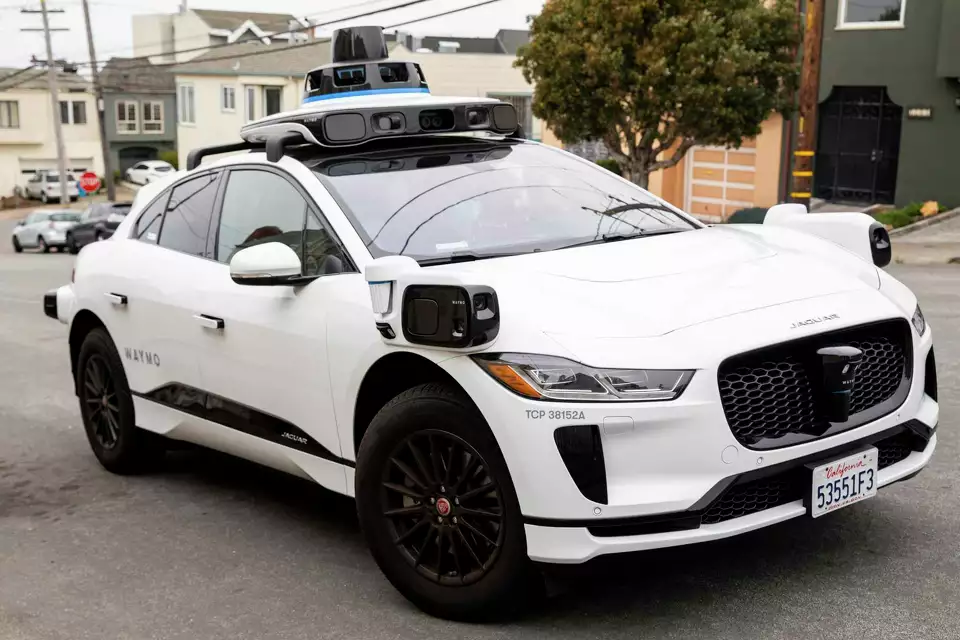An infuriating design quirk shows autonomous cars aren’t the future of transportation
 Image courtesy San Francisco Chronicle
Image courtesy San Francisco Chronicle
Autonomous cars are finally starting to tear up the streets in cities across the country, most notably in San Francisco, the land of Patagonia sweater vests and dubious Web3 startups. Residents can now summon a driverless vehicle to chauffeur them around without having to deal with pesky things like small talk or living wages. They just hop in a Jaguar with a spinny thing on the top and let it whisk them away.
But these robo-taxis aren’t all good—in late July, Sophia Tung was awoken at four in the morning by a symphony of honks in a parking lot outside her San Francisco apartment. Turns out that Waymo rented the lot to store their fleet on standby while they weren’t being used or charged. As the cars finished their night shifts of driving home drunk partygoers, they would stream into the lot and pack in like sardines. One small mistake, though, and a car would abort mission and back up, causing the car behind it to honk and reverse too. The disturbance would send a chain of honking cars all the way up the lot, ending at the poor Waymo car that just pulled in.
It wasn’t just Ms. Tung that lost sleep over the cacophony either. Neighbors lit up social media with videos of the fiasco, some of which gaining significant traction online. Ms. Tung herself even hosted a 24-hour livestream of the lot set to relaxing lo-fi hip hop music which is still up to this day. This PR nightmare soon got the attention of Waymo staff, which pushed out an update a week later that fixed the issue.
While this incident may seem like a benign example of a tech company’s funny oversight, it is an indicator of a much larger and systemic problem with autonomous vehicles. No matter how hard programmers and engineers try to design for every edge case that a vehicle would run into, the complexity of driving means that some things will inevitably slip through the cracks. And when these mistakes affect a two-ton hunk of metal barreling down the highway instead of a web app, they can easily turn deadly.
Autonomous driving has already resulted in a noticeable amount of collisions. According to a 2022 NPR article, over 400 car crashes were attributed to automated driving over a period of 11 months. And this statistic will only get higher as more autonomous vehicles enter the streets and expand to places with harsher climates.
One may argue that autonomous vehicles are still safer than human drivers, and they’re right—Waymo reported that their cars were 6.7 times less likely to get into a crash than humans. However, that fails to consider that cars are inherently dangerous. In 2022, car accidents killed over 40,000 people in the US. While self-driving cars may reduce the number of vehicle fatalities, it will still be staggeringly large.
We already know how to stop these deaths, though, and we have since the car’s inception; it’s simply to get cars off the road entirely. Building walkable neighborhoods and investing heavily into public transit can dramatically lower traffic fatalities, and it also provides fast, affordable, and reliable transportation to those who can’t or won’t drive. Many countries across the pond have made this connection, which over the past few decades has resulted in a dramatic split in fatalities between US and other developed nations.
So when you see a new ‘transportation revolution’ in the news about a fancy new autonomous vehicle or taxi service, instead of hailing it as the future of transportation, just think: “Didn’t we already solve this problem two hundred years ago?”
This article was featured in the September 17, 2024 issue of WPI Tech News.